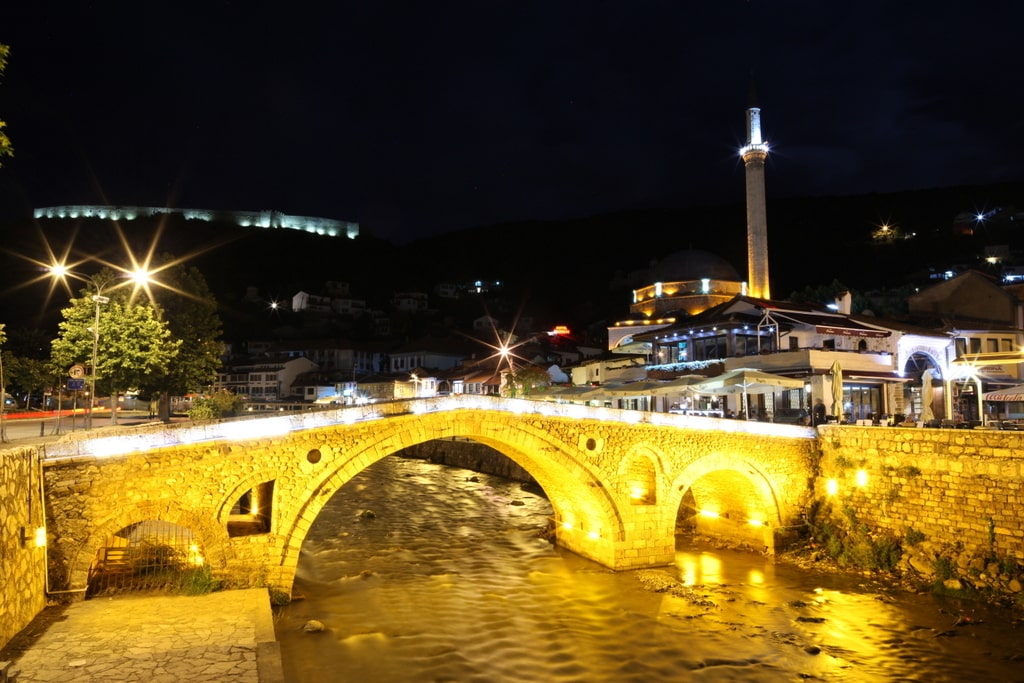Photo credits: Dini Begolli
Prizren is the jewel in the crown of Kosovo and a ‘must-see’ for any visitor. Prizren has the highest number of preserved Ottoman buildings with their upper storeys jutting out into the narrow cobbled streets. Prizren has not only retained the architecture from the Ottoman era but also many other flavours of Turkey, with the language being widely used, and delicious Turkish food. Many schools in Prizren still teach in Turkish and it is the only municipality where Turkish is an official language alongside Albanian and Serbian so you will see it on street signs and it also appears on tax bills. Several radio stations broadcast in Turkish and there is a weekly Turkish-language newspaper, Yeni Dönem.

Prizren is the most ethnically mixed municipality with large numbers of Bosnians and Turks and also Roma, Gorani and Terbesh. The cultural festival Zambak is held in July each year with songs and dancing from different ethnic groups.
Approximately 221,000 people live in the municipality, with between 40,000 and 60,000 in the city itself. It’s a young population with the schools operating up to two shifts a day and up to 50 in the class.
The town pretty well escaped damage in the 1998–99 war, but when the Albanians returned in summer 1999 a considerable number of Serbian homes were looted and burnt.
The town of Prizren is close to the Albanian border, with mountains on two sides. It has good access to water, with the Bistrica/Lumbardhi River flowing fast through the town and a pleasant sheltered climate.
What to visit in Prizren
The Halveti Tekke is more than 350 years old. Prizren is the headquarters for the tarikat order in the region with other Halveti branches in Rahovec, Mitrovica and Albania. The dervish ceremonies room is attractive with old wooden cupboards and shelves with the swords of the members, ornate instruments used in the ceremonies and rows of the white felt hats.
The Sheh Hasan House is one of the few remaining examples of the traditional Ottoman town house, dating from probably the 18th century. It includes the old woodwork lattice room on stilts.
Gazi Mehmet Pasha Hammam – These Turkish baths were built in 1573 by Gazi Mehmet Pasha at the same time as the mosque nearby (which also included a madrasa). The baths consisted of separate male and female areas.
The League of Prizren complex? Part of the League complex, with the entrance behind (as opposed to from the riverside) behind the wooden fencing is Gazi Mehmet Pasha or Bajrakli Mosque. This dates from 1566 and is possibly the most beautiful mosque in Prizren (on a par with Gjakova’s Hadum Mosque) with ornate woodwork and detailed blue-and-white paintings.
Sinan Pasha Mosque just across the bridge, is regarded as Prizren’s main mosque.It takes its name from its founder Sinan Pasha, who built this impressive mosque in 1615. The ruler had the prefix ‘Sofi’ added to his name in recognition of his wisdom.
Levišja/St Petka Church Apparently this predates the arrival of the Slavs in Prizren, dating from the Dardania era. At least seven different building phases have been identified, starting with the Romans and including renovations in the 9th century. The Slavs converted it into an Orthodox church, and it remains as such to this day. In 1307.